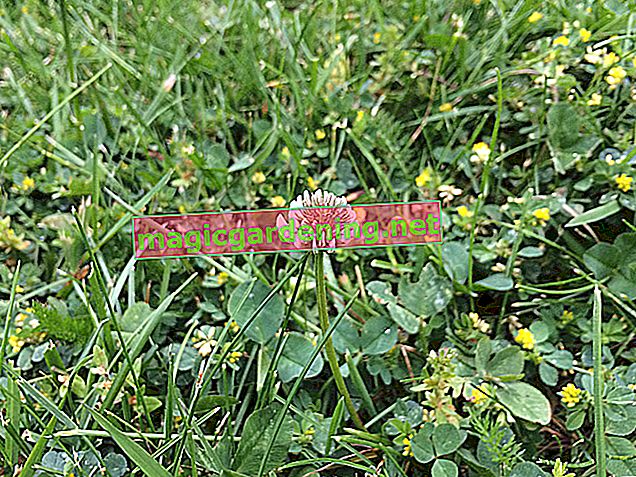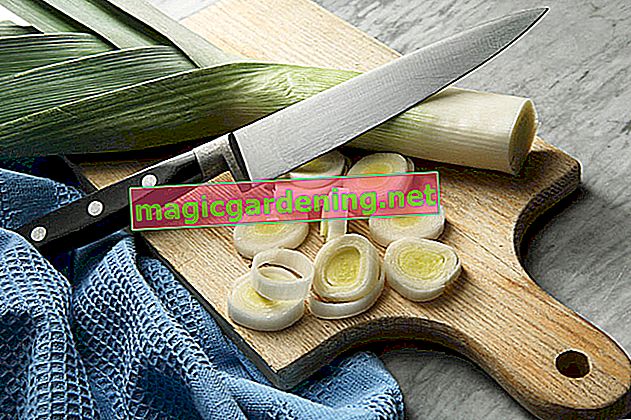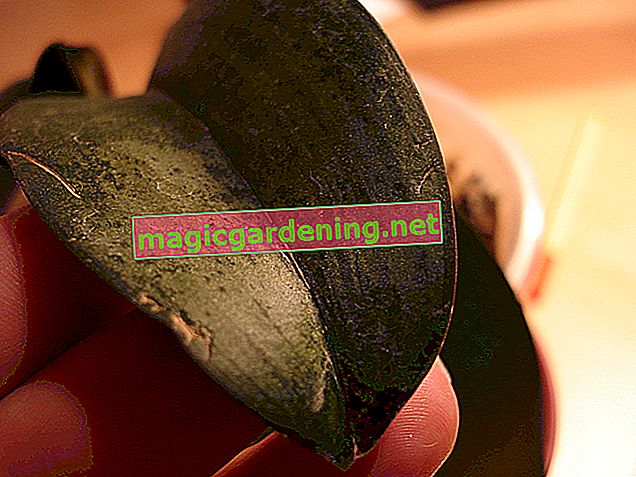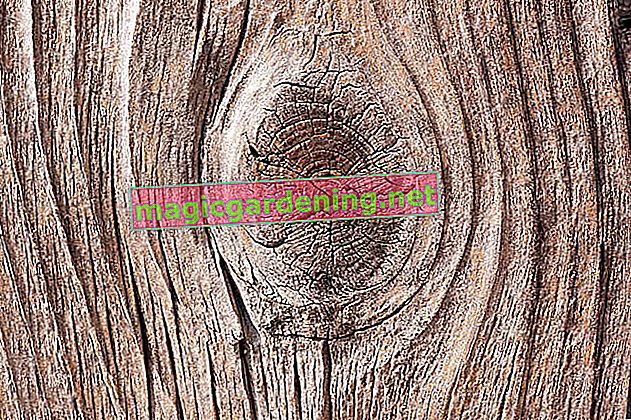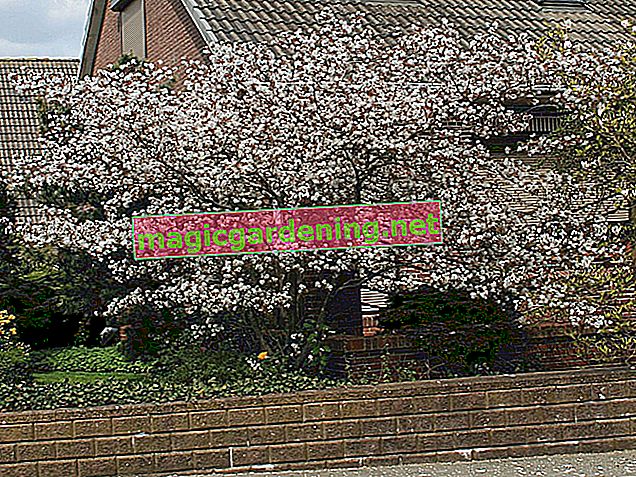
Care tips
With the copper rock pear, a splendid ornamental wood moves into your garden, which is satisfied with the following mini care program:
- Water regularly in the year of planting, later only during summer drought
- A start fertilization with compost and horn shavings (€ 6.39 at Amazon *) covers the nutrient requirements in March / April
- Thinning thoroughly every year immediately after flowering
- Topiary cut by a maximum of two thirds at the end of May / beginning of June if required
also read
- Copper rock pear has only low demands on location
- Copper rock pear is not poisonous
- Copper rock pear is also available as a high stem
While the currant tree receives a mulch on the root disc as winter protection in the planting year, you can save yourself this effort on the adult tree or bush. Nevertheless, ground frost in spring can damage the tender buds. If the night frost is announced, wrap the shrub or tree crown in a breathable fleece.
Which location is suitable?
If you meet the high light requirement when choosing the location, the currant tree will thank you for this care with a lavish flow of flowers and rich fruit hangings in autumn. We have compiled all the relevant criteria for you here:
- Full sun to light shade
- Normal garden soil, fresh, moist and well-drained
- Gladly a slightly acidic to alkaline pH value of 4.5 to 8.5
Since the tree or shrub develops a shallow root system, areas with compacted soil should be avoided. A sandy-loamy to loamy-clay soil without the risk of waterlogging is an advantage.
Continue reading
The correct planting distance
The umbrella-shaped silhouette as a shrub or tree imposes a solitary plantation on us. In a row or as a group, the elegant habitus with the slightly curved branches would only partially come into its own. Therefore, choose a suitable planting distance of at least 4 m to the right and left, so that the currant tree can impressively stand out even at an advanced age.
What soil does the plant need?
In any good garden soil, the copper rock pear will happily expand its flat root system. A fresh, moist and well-drained consistency, in combination with a slightly acidic to alkaline pH value of 4.5 to 8.5 is desirable. The closer the quality of the earth comes to the humus-free forest soil, the more vital the growth.
Cut copper rock pear correctly
The currant tree naturally develops a harmonious, umbrella-shaped stature. In addition, since the tree or shrub grows slowly, topiary is not an option every year. In contrast, you should thin out the ornamental wood regularly. How to do it right:
- Thoroughly thin out the shrub or tree crown immediately after flowering
- Cut off any dead wood at the base, as well as poor, crisscrossing, or inward-facing branches
- If necessary, shorten shoots that are too long by one to two thirds
- Make each incision 2-3 mm above an outward-facing eye (thickening under the bark)
Furthermore, keep an eye on the game underlay on a grafted tree all year round. If cheeky wild shoots sprout here, tear them off with a brave jerk so that the refined part is not overgrown.
Continue reading
Pour copper rock pear
A young tree or shrub always has a high water requirement as long as it takes root in the ground. Water a freshly planted currant tree regularly and thoroughly as soon as the soil has dried. Adult rock pears make do with natural rainfall. If the drought is prolonged during the summer, water thoroughly once or twice a week instead of just watering a little daily. Let the garden hose run for 20-30 minutes so that all roots are supplied with water.
Fertilize copper rock pear properly
The nutritional requirements of a copper rock pear are at a low level. A start fertilization in March / April with compost and horn shavings is completely sufficient for the season. Work in the organic material only superficially with the rake without damaging the shallow root system. Then water extensively.
Diseases
You will rarely have to complain about plant diseases in a copper rock pear. Although the name suggests otherwise, there is no closer botanical relationship with a real pear. So you can safely forget concerns about the dreaded pear rust disease. As a pome fruit tree, the currant tree is not immune to the dangerous bacterial disease fire blight. If the leaves turn brown-black and wilt, while black shoot tips tilt to the ground, there is immediate need for action. Cut the tree or shrub radically back into the healthy wood and dispose of the clippings in the household waste.
Continue reading
Overwinter
The copper rock pear is completely hardy. No special precautions are required so that the tree or shrub can get through the cold season unscathed. We only recommend light winter protection in the form of a layer of leaves on the root disc in the year of planting. In the spring, the buds can freeze to death due to belated ground frosts. If the meteorologists announce sub-zero temperatures at night, put a breathable hood over the shrub or tree crown.
Copper rock pear propagate
Unfortunately, no method of propagation turns out to be straightforward. Even when using common techniques, the copper rock pear is quite unruly. If you still want to dare to experiment, choose one of these approaches:
- Cut cuttings in early summer
- Refinement by means of inoculation, copulation or grafting of noble veins on a game base
- Sowing the cold germs behind glass after stratification
How do I transplant properly?
In the first 5 years of standing, you can replant a currant tree without hesitation. Ideally, move the tree or shrub to its new location in autumn. An ample water supply ensures that the copper rock pear re-rooted in the following days and weeks.
Is copper rock pear poisonous?
The copper rock pear is not poisonous. On the contrary, the spherical fruits can be eaten fresh in late summer. You can also conjure up refreshing jams, juices or liqueurs from the berries. The minimal content of glycosides in the leaves and seeds is harmless. Kilos of berries would have to be consumed before there would be nausea or other complaints.
Continue reading
Nice varieties
- Rainbow Pillar: columnar currant tree with white spring blossoms; ideal for the small garden; Height 3-5 m
- Ballerina: The noble variety captivates with abundant flowers, splendid autumn colors and edible fruits; 3-5 m
- Rubescens: Beautiful currant tree with reddish-brown shoots and delicate pink flowers from April to May; 3-5 m

